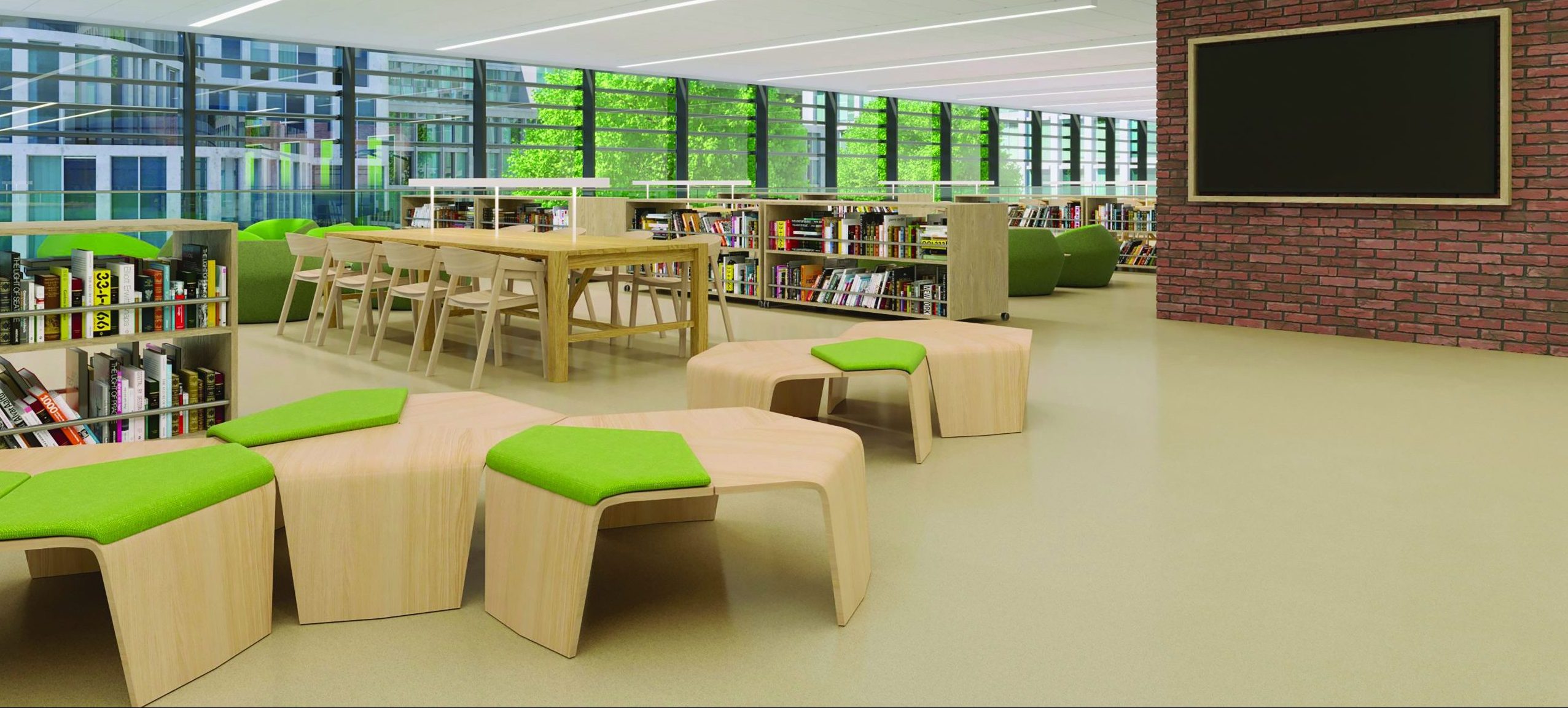
August, 2023
In the realm of educational design, every detail matters. From the layout of classrooms to the choice of furniture, architects and interior designers play a pivotal role in shaping environments that foster optimal learning experiences. One often underestimated aspect that can significantly impact the overall ambiance and functionality of an educational space is the flooring. The colour, pattern, and shape of flooring materials can exert a profound influence on the end user’s learning journey, making it a crucial consideration for those involved in educational design.
The selection of colours for educational spaces is far from arbitrary. Numerous studies have shown that colours can elicit emotional responses and affect cognitive processes. When it comes to flooring, colour choice can evoke different moods and stimulate various mental states. For instance, serene blue hues are associated with calmness and focus, making them an excellent choice for libraries and study areas. On the other hand, vibrant and energetic colours like yellow and orange can promote creativity and enthusiasm, making them suitable for art studios and interactive spaces.
Studies have found that certain colours could impact students’ attention levels and overall performance. Warm tones like red and orange were found to increase heart rates and alertness, while cooler tones like green and blue were linked to relaxation and concentration. This research underscores the importance of selecting the right colours for flooring to create an optimal learning environment.
Beyond colour, the patterns and shapes of flooring can also have a profound impact on the educational experience. Intriguing patterns can stimulate creativity and imagination, turning the floor into a canvas for inspiration. Geometric patterns, for instance, can foster a sense of order and structure, which can be particularly beneficial in spaces where discipline and organisation are key, such as laboratories or research centres.
Research has shown that spaces with intricate and visually engaging flooring patterns were more likely to stimulate creative thinking and problem-solving skills. These findings emphasise the potential of flooring design to influence cognitive processes and enhance the learning atmosphere.
In educational design, flooring colour holds a subtle yet potent sway over the learning experience. Colour psychology unveils its impact, with cool tones like blues fostering concentration and warm shades like oranges kindling creativity. A classroom enveloped in calming blue hues creates a receptive atmosphere for focused study, while vibrant yellows inspire curiosity and engagement. Research underscores colour’s link to emotions and performance, affirming its potential to enhance student involvement. Beyond cognitive effects, flooring colour shapes an institution’s identity, uniting aesthetics and ethos. Architects and designers wield this tool to craft environments that ignite inspiration, elevate learning, and instil a sense of wonder.
DURAFLOR has worked with many designers who are planning educational facility projects. With an extensive array of captivating carpet tile designs and versatile LVT options, DURAFLOR empowers professionals to transform learning spaces with aesthetics that inspire. The fusion of creativity and functionality is at the core of their offerings, ensuring tailored solutions that seamlessly align with the unique vision of each project.